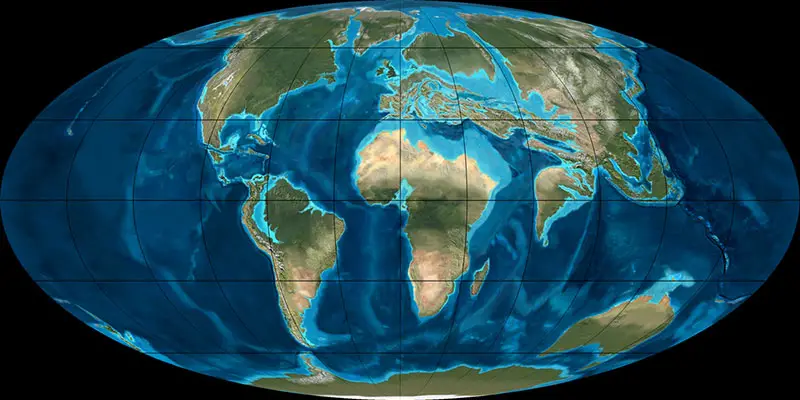†Gazinius (Omomyidae)
Gazinius ist eine Primatengattung innerhalb der Familie Omomyidae, deren 3 Mitglieder ab dem frühen Paläogen (Eozän) im Ypresium lebten, das vor ungefähr 56 Millionen Jahren begann und bis vor 47,8 Millionen Jahren andauerte. Viele Überreste wurden in Vereinigte Staaten von Amerika (USA) gefunden.
Gazinius ist der Gattungsname zweier ausgestorbener Primatenarten aus der Familie Omomyidae, die im Eozän in Nordamerika verbreitet waren.
Gazinius amplus
Seine Überreste wurden in Wyoming gefunden und stammen aus der der Bridger Formation und der Aycross Formation. Sie sind zwischen 50,3 und 46,2 Millionen Jahre alt. Fundorte: Big Island-Blue Rim Badlands (UM BI-9, UM BI-32), Sweetwater County, Wyoming. Flattop Quarry (USGS D-1033), Hot Springs County, Wyoming.
| Sammlung | Epoche, Alter | Geologie, Formation |
|---|---|---|
| Big Island-Blue Rim Badlands (UM BI-9) | Bridger | |
Gazinius bowni
Das Typusexemplar hat die Nummer UM 31560. Dabei handelt es sich um einen linken oberen Backenzahn (M2). Aufgrund der Morphologie glaubt man, dass Gazinius bowni ein baumlebender Insektenfresser war. Der Fund stammt aus der Bridger Formation und ist zwischen 50,3 und 46,2 Millionen Jahre alt. Fundort: UM BRW-4, Uinta County, Wyoming.
| Sammlung | Epoche, Alter | Geologie, Formation |
|---|---|---|
| UM BRW-40 | Bridger | |
| Kommentar z. Taxonomie | ||
| close to Sage Creek and about 1 mi NE of Stuck Truck based on map of West 1976a |
| Physiologie | |
|---|---|
| Gewicht: | ? |
| Schwestertaxa | |
Literatur
T. M. Bown 1982, Geology, Paleontology, and Correlation of Eocene Volcaniclastic Rocks, Southeast Absaroka Range, Hot Springs County, Wyoming. United States Geological Survey Professional Paper. 1201-A, p. A1 - A75G. F. Gunnell 1995, Omomyid primates (Tarsiiformes) from the Bridger Formation, middle Eocene, southern Green River Basin, Wyoming. Journal of Human Evolution. 28, p. - A75
G. F. Gunnell 1998, Mammalian Fauna From the Lower Bridger Formation (Bridger A, Early Middle Eocene) of the Southern Green River Basin, Wyoming. Contributions from the Museum of Paleontology, University of Michigan. 30:3, p. 83 - 130
